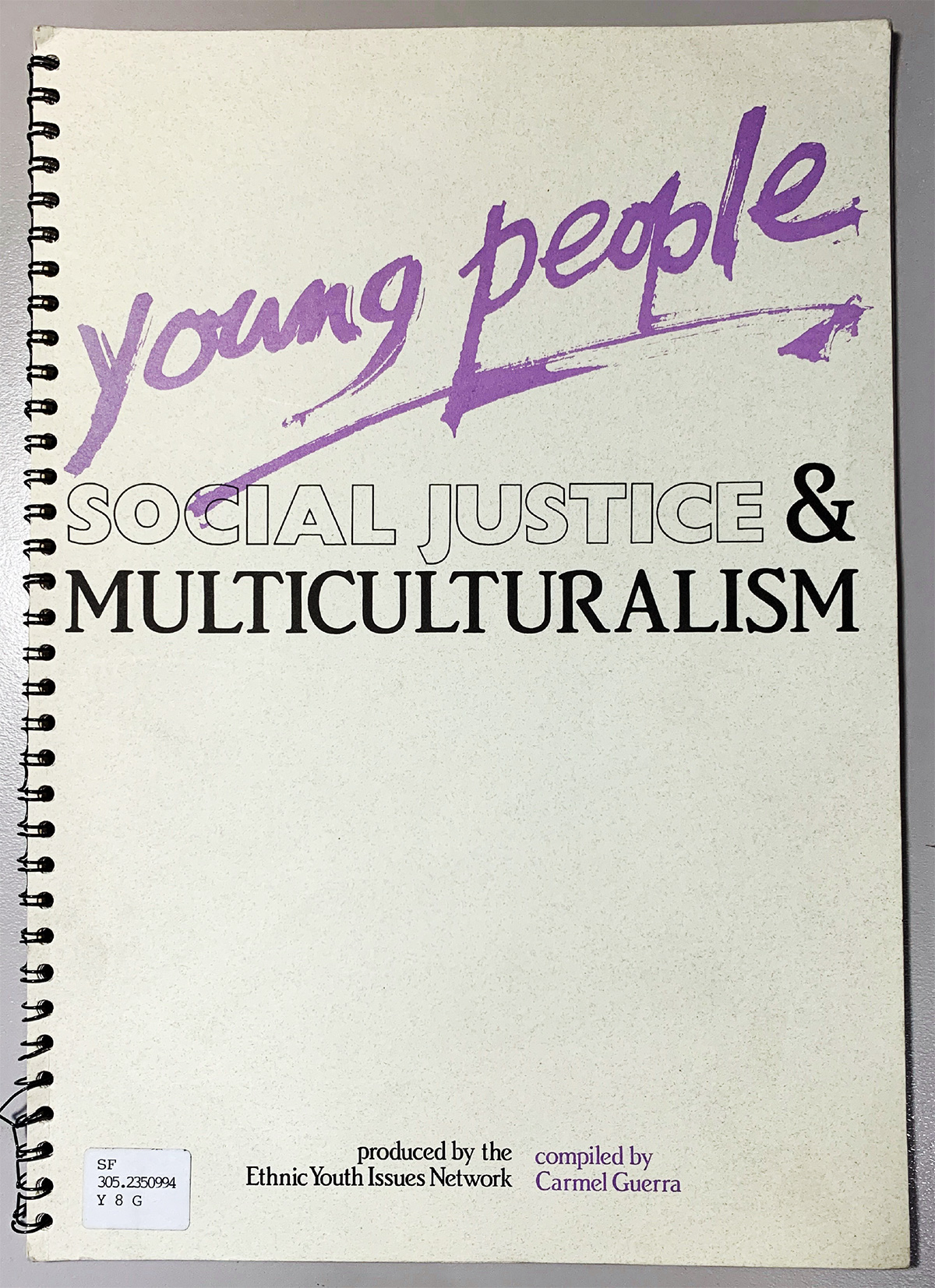The Ethnic Youth Issues Network (EYIN) released the first comprehensive framework for the delivery of services in a multicultural society within a social justice framework.
While important advances had been made in terms of the implementation of multiculturalism over the 1980s, by 1990, multicultural youth work practice was still a relatively new concept and much work was required to develop and test models of practice that both reflected and respected the cultural diversity of young people in Australia. While multiculturalism was being adopted in a range of important ways in Australian policies from the mid 1970s (and in a more accelerated way through the implementation of recommendations of the 1978 Report of the Review of Post Arrival Programs and Services for Migrants, known as the Galbally Report), it was not until 1989, the year before the Ethnic Youth Issues Network released the resource Young people, Social Justice and Multiculturalism, that the National Agenda for a Multicultural Australia laid out for the first time an Australia-wide multicultural policy framework. Multiculturalism’s meaning remains an evolving notion in keeping with contemporary values and challenges. What it meant to implement multiculturalism in service settings was still a fresh question at this time, ripe for exploration and development.
At this time, the approaches of both governments and youth services were commonly concerned with achieving social justice outcomes, in some cases merging this with the objectives of multiculturalism. The National Agenda for a Multicultural Australia named ‘social justice’ as a core dimension of the agenda, this being ‘the right of all Australians to equality of treatment and opportunity and the removal of barriers of race, ethnicity, culture, religion, language, gender or place of birth.’1 In the Victorian context, the mid to late 1980s had seen a strong focus on the achievement of ‘social justice’ as an objective both of the Cain Government and of community and youth services. For youth services, newly emerging frameworks to guide policy and program development had a strong social justice focus.2 In 1987, the Cain Government had released People and opportunities: Victoria’s social justice strategy, to ensure that ‘when government agencies allocate resources or plan initiatives, they do so with social justice criteria in mind – that they consider the impact of what they are doing in terms of creating opportunity for disadvantaged people, extending access and participation, and protecting rights.’3 This social justice focus aligned with the values of the members of the network, and in this encouraging policy context, the Ethnic Youth Issues Network drew on their ‘on-the-ground’ expertise to develop resources that would assist services to achieve social justice outcomes while delivering culturally relevant services to Victoria’s multicultural communities.
The social justice approach to multiculturalism as outlined by the Ethnic Youth Issues Network in this resource, and also as stated in the State Government’s social justice strategy of the time, placed key importance on the upholding of young people’s rights. In 1990, the same year that EYIN released Young people, Social Justice and Multiculturalism, Australia became a signatory to the United Nations Convention on the Rights of the Child (UNCRC), and ratified the convention later the same year. This meant that Australia had committed to upholding the rights protected by the convention, including the right of all children to express their views freely on all matters affecting them. From this time on, when the Ethnic Youth Issues Network advocated for young people’s rights, concepts of social justice, multiculturalism and the rights of the child provided a solid platform to legitimise EYINs advocacy claims.
 Cover of ‘Young People, Social Justice and Multiculturalism,’ (1990) by Carmel Guerra and the Ethnic Youth Issues Network
Cover of ‘Young People, Social Justice and Multiculturalism,’ (1990) by Carmel Guerra and the Ethnic Youth Issues Network
1 Office of Multicultural Affairs, Department of the Prime Minister and Cabinet (1989) National Agenda for a Multicultural Australia… Sharing Our Future. Australian Government Publication Services, 1989. p.1
2 The collaborative efforts of the Youth Policy Development Council, the Youth Affairs Council of Victoria and the Municipal Association and Victoria are acknowledged as largely responsible for progress being made in ‘developing a more coherent framework for policy and program in youth affairs’ in Young People Social justice and Multiculturalism p 10.
3 People and Opportunities: Victoria’s Social Justice Strategy. (1987). Melbourne, Government of Victoria.
